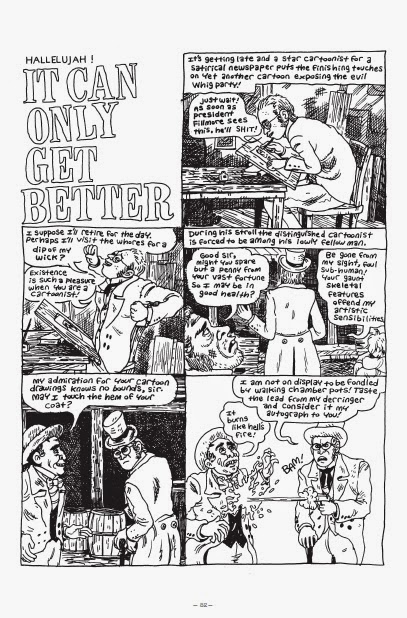Gabrielle Bell, Uncivilized Books, Minneapolis (USA), May 2014, 176 pages b/w and color, softcover, 6 x 9 inches, $ 19.99.

A decade ago Gabrielle Bell published her comics in the best anthologies of those years. When in 2004 the fifth issue of Kramers Ergot was out, her Cecil and Jordan in New York, then adapted for the screen by Michel Gondry in Tokyo!, was one of the best story of the essential book edited by Sammy Harkham. The following year, Fantagraphics launched Mome and the cover was a Bell's illustration, taken from I Feel Nothing, the story that opened an anthology hosting the best American cartoonists. In 2006, she contributed to another important publication of that period, Drawn & Quarterly Showcase. The story appeared in the fourth issue and it was later reprinted in the book Cecil and Jordan in New York, in my opinion the peak of the cartoonist's production along with The Voyeurs, published in 2012 by Tom Kaczynski's Uncivilized Books. The same publisher is releasing the new Truth Is Fragmentary, that will debut this weekend with some advance copies at the Toronto Comic Arts Festival.

If the comics from Cecil and Jordan aren't so well-defined, since they feature a lot of personal elements but without being a declared and detailed account of everyday life, the ones in The Voyeurs and in Truth Is Fragmentary represent the typical autobiographical Bell's production as we can find in her series Lucky. The book collects a series of stories seen on the internet or as mini-comics from 2010 to 2013 and divided broadly into two categories: the first consists of reports from conventions, the second of the series July, the annual account of a whole month. So the reader is taken from Sweden to France and then to experience the hot summer in Brooklyn, leaving again for the Fumetto festival in Lucerne, then back in the United States, to make a stop at the Oslo Comics Expo and in an isolated farmhouse outside of New York, concluding the route with a visit to Colombia for the Entreviñetas festival. Page after page we meet cartoonists, friends, roommates, bears, dogs, witnessing moments of reflection about existential themes and feelings of alienation from the rest of the world. A lot of panels are dedicated to self-referential thoughts about the nature of Bell's art and she often asks herself the meaning of doing comics about doing comics. Another recurrent theme is the impossibility of reaching a total realism, hence the title of the book, taken from an introduction to a play by Tennessee Williams.

Truth Is Fragmentary is focused mostly on metanarration, while The Voyeurs was a diary and an account of an intense moment in Bell's life, rich of sentimental relationships, intriguing events, original anecdotes. However, even if it doesn't reach the level of the previous book, Truth Is Fragmentary is a pleasant reading, in which Bell confirms her inclination to use a light tone, showing her idiosyncrasies and obsessions but without getting completely naked as, for example, Chester Brown and Joe Matt would. Moreover, this solution wouldn't be in her style, given that she isn't so much inclined to fully disclose her intimate secrets but she prefers to report the meaninglessness of everyday life, sometimes including surreal and fantasy elements, as when she describes an upcoming apocalypse, or ghost cats appear, or a bear drives an ice cream truck. These are the most successful passages of the book, along with some variations of style, that are pleasant changes from the usual form. No coincidence the best chapters are in my opinion July 2013, in which Bell sets aside the metanarrative theme and frees herself from the obligation to draw a page everyday, and the reports from Colombia, that taking cue from Montaigne are narrated by an imaginary secretary, giving freshness and originality to the story.
















